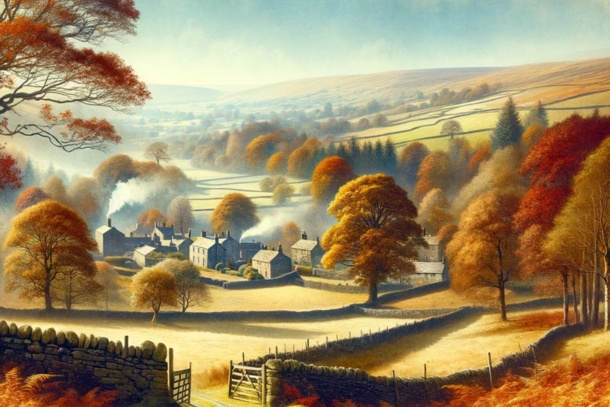What is Restless Leg Syndrome?

Restless Leg Syndrome, also known as Willis-Ekbom disease, refers to the uncomfortable sensation in one or both legs. The feeling is often described as itchy, prickling and pulling, which results in the urge to move your legs. Restless Leg Syndrome can often disrupt your sleep, with the condition affecting between 5% and 10% of adults and 2% to 4% of children. Although symptoms are more commonly known to occur in the late afternoon or evening, it is not uncommon for the symptoms to become more prominent at night due to long periods of inactivity.
What are the symptoms?
There are various symptoms that contribute to the diagnosis of Restless Leg Syndrome, but the most commonly reported symptoms are as followed:
- Twitching
- Uncomfortable sensation
- Restlessness
- Needing to stretch
- The urge to move
- The feeling that your legs want to move on their own
It is commonly seen that Restless Leg Syndrome can affect an individual in their sleep. It can cause involuntary sudden movements that can become repetitive.
Causes of Restless Leg Syndrome
The main cause of Restless Leg Syndrome is currently not known. However, there are some causes which have been thought to be in connection with the disease. Other medical conditions, such as late stage kidney disease, iron deficiency, neuropathy, multiple sclerosis, and Parkinson's disease, are in association with Restless Leg Syndrome. It is recorded that the disease is more common in women than men, and is often found in older adults.
There are other factors, for instance 20% of women who experience the symptoms of Restless Leg Syndrome are within the third trimester of their pregnancy. However, this is often temporary and lasts until around 4 weeks postpartum in most cases.
Triggers
It is important to identify triggers that may be an influencing factor for the symptoms you are experiencing. Alcohol consumption can lead to an increase in symptoms and cause them to worsen. In addition, caffeine, smoking/nicotine, stress, a lack of sleep, and long periods of inactivity are also known to instigate symptoms of Restless Leg Syndrome.
How is it diagnosed?
There is not a test that doctors will carry out in order to diagnose you with Restless Leg Syndrome. However, it can be diagnosed through a doctor's evaluation. Doctor’s will often respond with a five step criteria that helps to clinically diagnose the condition.
- The strong, overwhelming, and often uncontrollable urge to move your legs
- As a result of inactivity this urge worsens
- This urge is relieved, if only temporarily, once you have made the movement
- The urge to move your legs becomes more persistent at night or in the evening
- If any of the aforementioned symptoms are not related to an existing medical condition, then they will consider this in their evaluation
In the case where they feel this may be related to another health condition, such as iron deficiency, they will run the relevant tests to determine whether or not this condition is related to other medical disorders.
How to Manage Restless Leg Syndrome
There are various medications that can be used to treat Restless Leg Syndrome, but if you are interested in taking a more natural approach to subside the symptoms, it may be worth ensuring that you are frequently practicing good sleep hygiene. Exercise is also thought to reduce symptoms, but be aware that overdoing the exercise may have the opposite effect and you might find that it can make your symptoms worse. A hot bath can help to ease the severity of the symptoms, alongside massages.
Managing your sleep with Restless Leg Syndrome
Many of the symptoms can be either uncomfortable or painful making your relationship with sleep become difficult. It is important to ensure that you are getting enough sleep, therefore in addition to managing Restless Leg Syndrome on a regular basis, it is important to consider how to manage it alongside your sleep routine. Adopting good sleep hygiene, such as setting a regular bedtime, sleeping similar hours each night, and avoiding alcohol and caffeine in the hours following up to your bedtime are ideal lifestyle commitments that may help you manage Restless Leg Syndrome throughout the night.
In some cases, sleep deprivation and other conditions that affect your sleep can be an influencing factor in the aggravation of Restless Leg Syndrome, therefore triggering the symptoms.
Related to this article are the following:
- Navigating the Seas of Mythology: Unraveling the Legends Surrounding the God of the Seas
- Compact Discs (1982-2007): The Shiny Revolution in the Music Industry
- The Unforgettable Era: A Comprehensive Background on Cassette Tapes
- The Mediterranean Diet: A Delicious Way to Eat Your Way to Better Health
- Stretching in the Morning: Knees, Legs and Lower Back Stretches
I do hope you have enjoyed this article and hope that you will subscribe to my newsletter so you can get the latest information about all things naturally relaxing.
Stay in touch, join the Naturally Relaxing Newsletter
Newsletter Signup
Post Your Comments
or post as a guest
Be the first to comment.
Latest articles in Sleep

The Power of Waterfall Sounds for Enhanced Sleep Quality

Embracing Autumn: Sleep Routines for the British Season

Autumnal Slumber: Understanding Our Seasonal Sleep Patterns

Crafting the Ideal Autumnal Sleep Sanctuary

Savouring Autumn: Foods to Enhance Your Sleep






